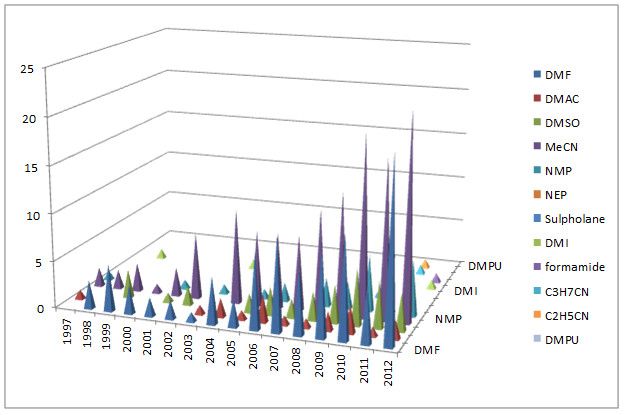Survey of Solvent Use
The CHEM21 project conducted a survey of solvent usage for papers published in Organic Process Research & Development over a 6-year period from 1997–2012.[1] The survey focused on three solvent classes:
- Solvents of concern (including dichloromethane, n-hexane, diisopropyl ether, 1,2- dimethoxyethane, 1,4-dioxane, diethyl ether, 1,2-dichloroethane, and chloroform)
- Dipolar aprotic solvents
- Neoteric solvents

Figure 1: Dipolar aprotic solvents total use and variation over time [1]
Key findings were that:
- Approximately half of the instances for use of dipolar aprotic solvents were for nucleophilic substitution reactions (primarily SNAr and SN2 reactions). The paper makes suggestions of how the use of DMF/DMAc/NMP/DMSO in these reactions could be reduced.
- 2-methyltetrahydrofuran was the only neoteric solvent that demonstrated a significant increase in its during the survey period.
- Although some solvents of concern are unfortunately still being employed, pleasingly, on a greater than 100Kg scale, the survey showed that there is a large reduction in the use of DMF, n-hexane, diisopropylether, DMAc, DMSO and ‘the complete elimination of diethyl ether and dioxane’
- C. P. Ashcroft, P. J. Dunn and A. S. Hayler John D and Wells, Survey of Solvent Usage in Papers Published in Organic Process Research & Development 1997–2012, Org. Process Res. Dev., 2015, 19, 740–747.